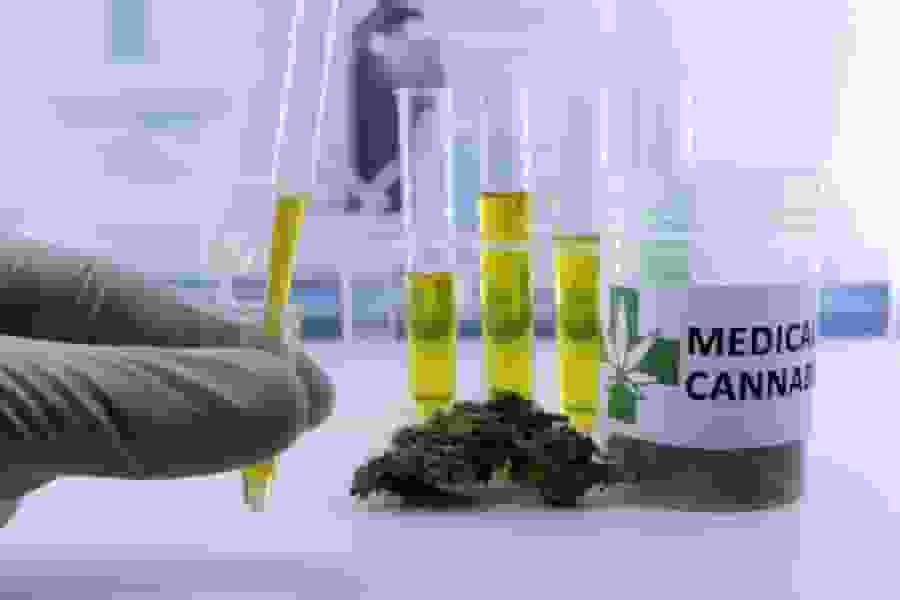In the United States, a strange sickness is on the rise, particularly in states where the legalization of marijuana exists. Cannabis users, including teens, are presenting to emergency rooms with severe intestinal distress.

People who use marijuana daily, according to a study, may experience withdrawal symptoms (Photo by Getty Images).
Dr. Sam Wang, a pediatric emergency medicine expert, and toxicologist at Children’s Hospital Colorado, who treats adolescents with the disease, said patients were writhing, gripping their stomach, complaining of really acute abdominal pain and nausea, per CNN.
Wang also explained that the patients vomit and then continue to puke whatever they have in their stomach for hours. They frequently claim to have taken a very hot shower before going to the ER, but it didn’t help. At that point, Wang and his colleague knew that they were dealing with cannabis hyperemesis syndrome or CHS.
Studies About CHS
Cannabis hyperemesis syndrome first appeared in the medical literature in 2004, when a group of Australian researchers published a study of 19 chronic marijuana users who regularly had gastrointestinal pain and retching. When the researchers tracked nine patients over time, they discovered that symptoms went away when they quit using cannabis but returned when they started again.
As the number of instances of CHS increased, hot bathing as a home treatment became more common.
Thus, Wang asserted that it’s fairly common for these people to report that a hot shower or an extremely hot bath can help them feel better.
Why is it so hot? Wang, who is also an associate professor of pediatrics at the University of Colorado Anschutz Medical Campus in Aurora, Colorado, said that it is not fully apparent.
The primary psychoactive ingredient in marijuana, tetrahydrocannabinol, or THC, has access to the body’s pain receptors. Thus one explanation is that the distracting sensation of intense heat pauses the pain cycle, alleviating symptoms.
In addition to the oddity of the new condition, THC and other cannabinoids found in marijuana have been used to treat pain, nausea, and vomiting in cancer patients receiving chemotherapy. Despite marijuana’s appeal as a pain reliever, research findings on its usefulness have been varied.
Why, though, would the same molecule both ease and induce pain? Dosage levels are one option among many. The potency of THC in today’s marijuana products is increasing, according to Wang.
Wang added in a statement that it’d been clearly known that the level of THC in cannabis is significantly increasing. Retrospectively, in the 1990s, the average was about 4% or 5%, but right now, it’s somewhere between 15% and 20% in Colorado.
More than a third of the vomiting incidents occurred in people under the age of 25.
Available Treatments and Medications
Anti-nausea drugs and IV fluids are used immediately to prevent dehydration caused by vomiting. However, to rule out other causes, patients must endure a battery of tests, including blood and urine testing, costly CT scans, uncomfortable upper GI endoscopy, and gastric emptying tests, to mention a few.
Those exams could be performed several times for some children.
CHS might be life-threatening if they wait too long to come in.
Furthermore, CHS is a national issue, according to data. A 2020 study indicated that nearly one in five persons hospitalized for cyclical vomiting in the United Jurisdictions reported concomitant cannabis use between 2005 and 2014 when only medicinal marijuana was permitted in most states.
According to the Pew Research Center, 17 states and the District of Columbia have legalized recreational marijuana for adults, while three dozen states and numerous territories have medical marijuana laws.
According to a Pew poll, most people in the United States (60 percent) believe marijuana should be legal for medical and recreational use. With such widespread support, it’s conceivable that more states will legalize marijuana in the coming years.
Wang hopes that people will also consider the possible hazards of cannabis when they do, particularly for children.
Dr. Wang opined that there had been a rising concern about frequent use and its impact on the physical and mental health of teenagers and young adults.




![Tyson Foods Plant [Photo: Food Manufacturing]](https://southarkansassun.com/wp-content/uploads/2023/08/iStock_1185520857__1_.5e441daa51cca-600x337.jpg)







![Silverado Senior Living Management Inc. [Photo: Los Angeles Times]](https://southarkansassun.com/wp-content/uploads/2023/10/download-6-4-600x337.jpg)

![China's Wuhan Institute of Virology [Photo: Nature]](https://southarkansassun.com/wp-content/uploads/2023/09/d41586-021-01529-3_19239608-600x337.jpg)
















